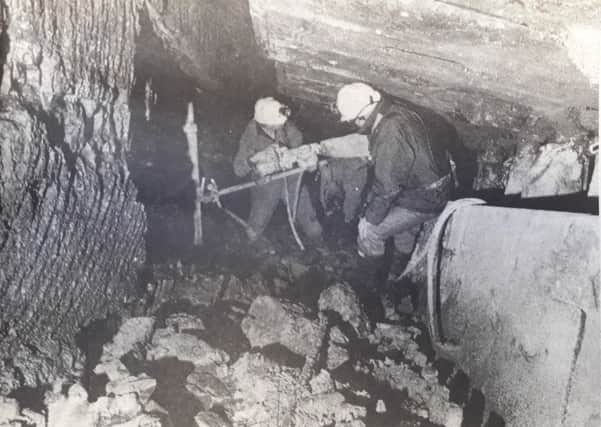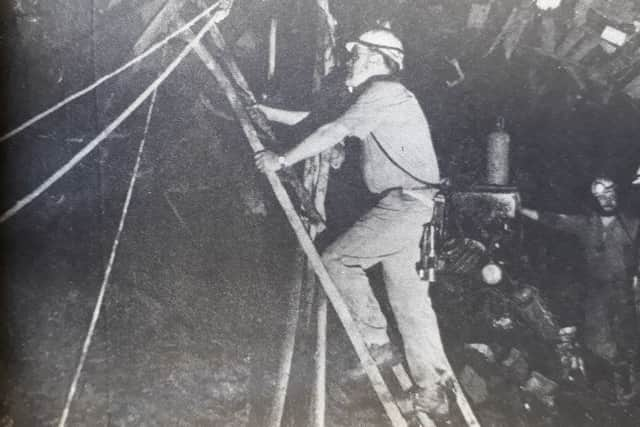Nostalgia - Black Sunday: The day the pits faced closure


On what was deemed ‘Black Sunday’, February 3, production ceased at Frances Colliery in Dysart with the loss of 500 jobs.
And just three days later it was announced that the main production face at Seafield Colliery would also close, with a further 300 workers losing their jobs.
Advertisement
Hide AdAdvertisement
Hide AdIt was a devastating and tragic development for Kirkcaldy, coming in a blazer of bitter recrimination between the National Coal Board and the National Union of Mineworkers, putting the jobs of a further 1500 men at the Seafield complex on the line.


The Frances Colliery – the oldest pit in Scotland – was closed down due to problems with its underground heating.
Rescue teams and Coal Board scientists had waged a tireless two-week battle to save the site, desperately trying to locate and contain the heating which was located some 3000 feet beneath the surface.
The Dysart seam was prone to heating problems and on Monday, January 28 it had flared meaning that an extensive fire had broken out and carbon monoxide levels were rising.
Advertisement
Hide AdAdvertisement
Hide AdColliery manger George Caldow sealed off part of the pit as men worked successfully to stop the heating rising any further, but levels began to rise again and the Coal Board took the decision to close the site down.


The same problem was responsible for the closure of the LO1 face at Seafield, and 300 jobs with it.
Every mines rescue team from across Scotland, along with men from Northumberland and Durham worked in what were described as “appalling” conditions to try and save the face.
Hundred of tons of liquid cement were pumped into the ground in attempt to starve the fire of oxygen.
Advertisement
Hide AdAdvertisement
Hide AdBut, just like at Frances, their efforts were in vein and the LO1 pit was sealed off.
Albert Wheeler, the Coal Board’s Scottish Director blamed union leaders for both catastrophes, which came as a miners’ strike was taking place.
“The responsibility for this tragic loss rests with the National Union of Mineworkers,” he said.
“Their local strike committee leaders showed a totally irresponsible attitude when they failed to respond to earlier requests for assistance.
Advertisement
Hide AdAdvertisement
Hide Ad“This is a continuation of the tactics they have adopted since the beginning of the strike.
“It is impossible to understand the mentality of strike committees who prevent safety men from getting to work.”
Jimmy Gow, vice-chair of the Seafield Branch rejected Mr Wheeler’s claims, saying they were given all the men they were asked for whilst branch chairman, Alexander Sneddon, vowed to fight on to try and save both pits. “We have lost the face, but we have not lost the colliery and we will be fighting for the retention of both Seafield and Frances,” he said.
“There is plenty scope for development at both collieries and we will be fighting to ensure they are retained – no matter what they board claim at the moment.
Advertisement
Hide AdAdvertisement
Hide AdNUM officials and Coal Board members set up an emergency meeting which was to be held in Edinburgh.
Alas, it was to no avail.
Frances Colliery never re-opened for production and was closed for good officially in 1988.
Its winch tower remains at the site today as a reminder of Fife’s proud mining past.
That same year, the Seafield Colliery was also closed and its iconic twin towers were demolished the following year.